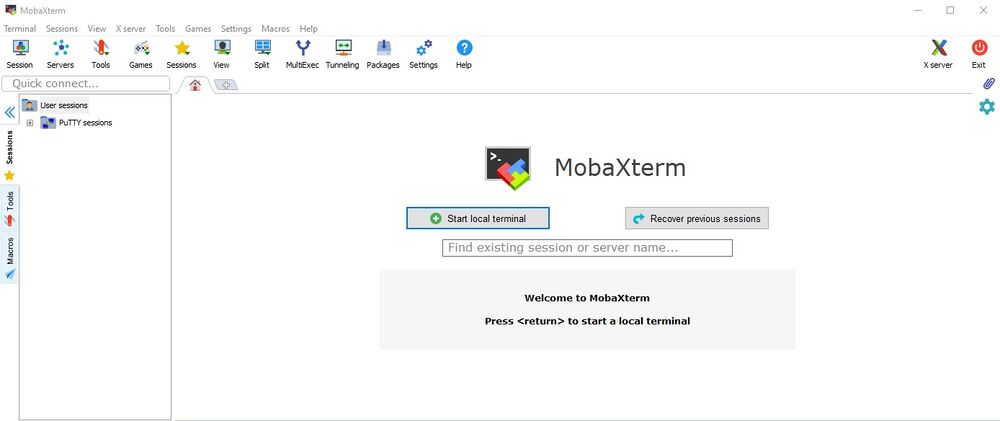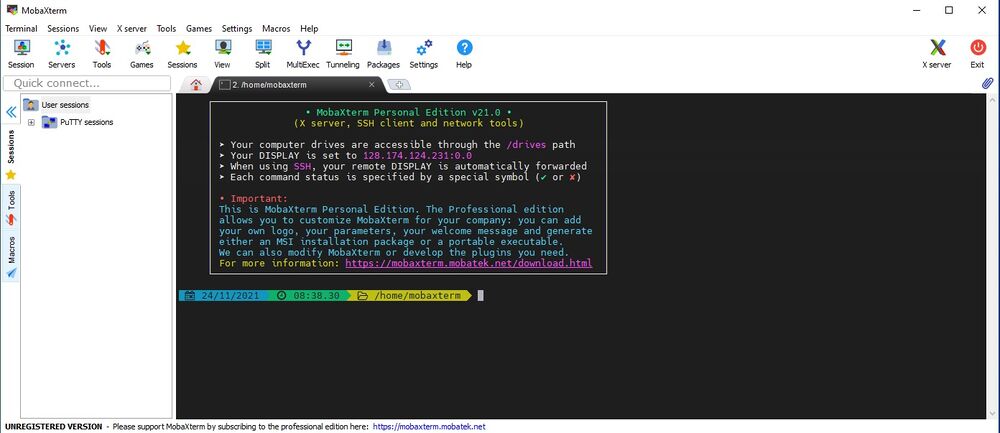Xserver Setup: Difference between revisions
Jump to navigation
Jump to search
| Line 1: | Line 1: | ||
== MAC OSX == | == MAC OSX == | ||
*Download '''XQuartz''' [http://xquartz.macosforge.org/landing/ http://xquartz.macosforge.org/landing/] | *Download '''XQuartz''' [http://xquartz.macosforge.org/landing/ http://xquartz.macosforge.org/landing/] | ||
Revision as of 08:45, 24 November 2021
MAC OSX
- Download XQuartz http://xquartz.macosforge.org/landing/
- Install XQuartz and be sure to restart the computer after the installation is done.
Connecting
- Open a terminal client and type in
ssh -X [yournetid]@[destination.server.edu]
- The -X after "ssh" tells the computer to connect using xserver
- yournetid - is your university netid
- destination.server.edu - the server you would like to connect too (example: biocluster.igb.illinois.edu)
Windows with MobaXterm
- MobaXTerm includes an xserver. This is the easiest method on a windows computer
- Download and install MobaXterm at https://mobaxterm.mobatek.net/
- Open MobaXterm and select Start local terminal

- Then type in the ssh connection string into the prompt
ssh -X [yournetid]@[destination.server]
- The -X after "ssh" tells the computer to connect using xserver
- yournetid - is your university netid
- destination.server.edu - the server you would like to connect too (example: biocluster.igb.illinois.edu)

Testing
- A good test is to run the program "xterm". Most hosts will have this installed. It will open up a graphical terminal box.
[username@hostname ~]$ xterm